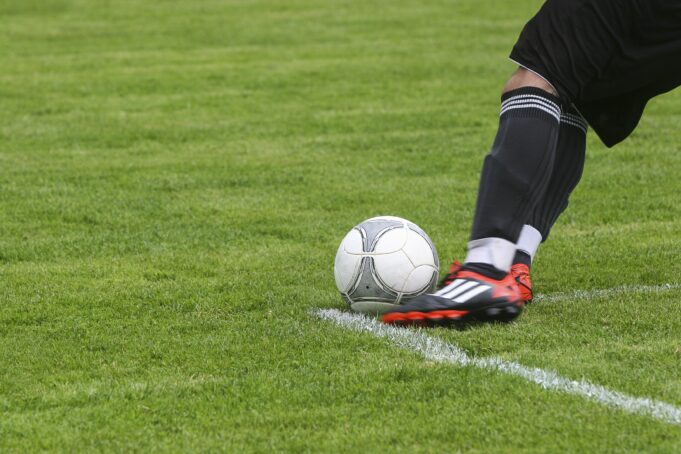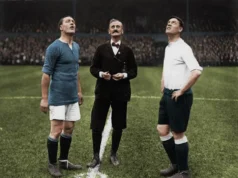During 90-minute games, soccer players are in constant motion. Intense sprinting sessions follow short periods of jogging, and players seldom get a break until the half is over. To stay competitive in soccer, you can begin a conditioning program that prepares your body for the rigors of the sport. Although you can take advantage of a gym membership for training, most of the exercise doesn’t require heavy equipment or complex machines. The following paragraphs describe some of the practical conditioning exercises that you can practice every week.
- Warm-Up and Stretching
Before diving into your conditioning program, you need to warm up your muscles. Take a slow ten- minute jog around the field and loosen up. If you’re unable to use a field or track, you can jog in place. Next, you can focus on a series of stretches for fifteen to twenty minutes. You’ll decrease the likelihood of a strain or crippling cramp when your muscles are adequately stretched, and preventing injuries will keep you in the game longer. Your hamstrings and quadriceps, two of the most significant leg muscles, should receive the most attention during the sessions. Hold your stretch for several seconds before you release and move on to the next one.
- Pool Laps
Running is an excellent activity for cardiovascular health, but several players prefer to train in the swimming pool. Swimming laps is great for building up your endurance, and it strengthens your arms and legs. Try swimming two miles in the pool and eventually adding more distance each week. If you add a quarter-mile onto your schedule each week, you’ll be able to swim three miles in a month, but it will feel more like two miles since the changes were introduced gradually. You can use a neighborhood or public pool for training, but most pools are not open before 8 am and close before dusk. When you contact custom pools in Las Vegas, you can swim at any time of the day away from the crowd.
- Strength Training
Cardiovascular training is crucial for building up your endurance, but you shouldn’t disregard strength training. Lifting weight will build up your muscles, but you can also perform calisthenics if you don’t have access to weights. Lunges, air swats, pull-ups, and push-ups are effective exercises, but you can maximize your sessions by adopting interval training. Interval training involves periods of intense exercises followed by slower-paced intervals. For instance, you can start by seeing how many push-ups you can do in five minutes and follow that with five minutes of slower-paced pull-ups. Repeat the process until you’ve exercised for thirty minutes.
- Dribble Exercises
Dribbling is how soccer players move around the field, and it’s crucial to hone your dribbling techniques to be a successful player. One of the most effective methods for dribbling exercises is to set up cones around an open field. Move in and out of the cones while you dribble the ball and try to cut as close to the cones as possible when you change direction. After you finish a route, rest for five minutes and move through the course again. On each successive attempt, try to dribble faster around the cones.
- Suicide Sprints
Although most athletes are not fond of suicide sprints, they are a significant part of every soccer, football and basketball players’ workouts. In soccer, you have to sprint at full speed and change direction on a dime. Suicides prepare your body for the abrupt change in direction and improve your dexterity. To set up a suicide course, you can use a series of markers or cones ten to twenty yards apart. You’ll run to the first marker and back to the starting point. Then, without a pause, you’ll run to the second marker and back. Repeat the process until you’ve run to all of the markers and rest for five minutes. Run the suicide course again and try to complete several cycles before you collapse on the grass.
Soccer is an exhausting sport, but weekly conditioning training will improve your endurance, agility and strength and prepare you for the big game.






